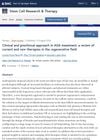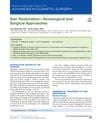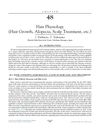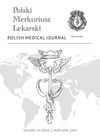New 2025 study: high dose oral minoxidil (up to 10mg) Research/Science 9/24/2025
High-dose oral minoxidil (>5 mg/day) can increase hair density in some men with androgenetic alopecia, but side effects like extra body hair and heart issues are common. Gradual dose increase is advised, but adverse effects may lead to discontinuation or dose adjustments.
View this post in the Community →
Similar Community Posts Join
5 / 1000+ resultscommunity Stop the fear mongering of oral minoxidil its one of the best treatments available in 2020. It does not cause heart lesions or adverse cardiac effects like people claim. I am maintaining with just oral minoxidil with retrograde alopecia and diffuse thinning all over nw3 hairline
Oral minoxidil is considered a safe and effective treatment for hair loss at low dosages, with minimal cardiac risks. Users report positive results, though some experience side effects like increased heart rate and skin changes, and consulting a doctor is advised.
community How do you even get time to “enjoy” your hair while on minoxidil?
Minoxidil is often applied once or twice daily for hair growth, but many find it inconvenient and switch to once daily or oral minoxidil for ease. Some users combine it with finasteride for better results, despite potential side effects.
community 31M. Just diagnosed with androgenic alopecia. Fears of min.
A 31-year-old man with androgenic alopecia is considering treatments like finasteride, minoxidil, and ketoconazole shampoo but is worried about finasteride's side effects. Users recommend starting with finasteride or dutasteride for DHT blocking, suggesting topical solutions to reduce side effects.
community Anyone else growing tired of the finasteride wars?
The conversation is about differing experiences with finasteride for hair loss, with some users reporting side effects and others not, and the debate over the drug's safety and effectiveness. Specific treatments mentioned include finasteride, dutasteride, and topical finasteride.
community 2.5 months topical minoxidil Progress
The conversation is about a user's hair regrowth after 2.5 months using topical minoxidil. Some suggest adding finasteride for long-term results, while others share their experiences with side effects or alternative treatments like dermarolling and dietary improvements.
Related Research
6 / 1000+ results
research Cancer-Related Alopecia Risk And Treatment
Scalp cooling helps prevent hair loss during chemotherapy, and minoxidil aids regrowth.

research Clinical And Preclinical Approach In AGA Treatment: A Review Of Current And New Therapies In The Regenerative Field
New regenerative therapies show promise for treating hair loss.

research Hair Restoration: Nonsurgical and Surgical Approaches
Hair restoration can be achieved through non-surgical treatments like minoxidil, antiandrogens, phototherapy, and PRP procedures, or through surgical methods like hair transplantation. Continued treatment is needed to maintain results, and full results are visible after 12-18 months.

research Technological Advances in Anti-Hair Loss and Hair Regrowth Cosmeceuticals: Mechanistic Breakthroughs and Industrial Prospects Driven by Multidisciplinary Collaborative Innovation
Collaboration and innovation are key to developing effective, safe hair loss treatments.

research Hair Physiology: Hair Growth, Alopecia, Scalp Treatment, Etc.
The document concludes that new treatments for hair loss may involve a combination of cosmetics, clinical methods, and genetic approaches.

research Causes and Management of Pica Disorder Among Central Iraqi Peoples
Pica disorder in central Iraq is mainly found in females and is linked to low iron levels; treatment with iron improves most patients.